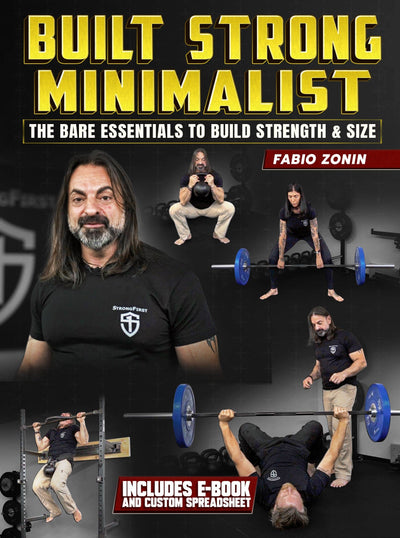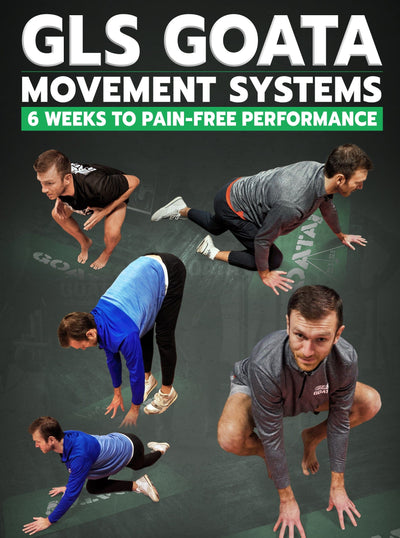Kettlebell Back Extension
A strong and stable back is crucial for maintaining good posture, preventing injuries, and supporting overall functional movement. While traditional back extension exercises are effective, incorporating kettlebells into your routine can add an extra challenge and intensify the workout. In this blog post, we will explore the benefits and proper technique of the kettlebell back extension (KBE) exercise, and how it can help you build a stronger and more resilient back. Add the knowledge below to help build your own kettlebell back workout!
What this article covers:
- Understanding the Kettlebell Back Extension
- Set Up
- Execution
- Tips for Optimal Performance
- Progressions and Variations
- Single-Arm KBE
- Russian Kettlebell Swing into Back Extension
- Benefits of Kettlebell Back Extensions
Understanding the Kettlebell Back Extension
The kettle bell back extension is a dynamic exercise that primarily targets the muscles of the lower back, including the erector spinae and glutes. Kettlebell lower back exercises can help in a wide variety of ways. It also engages the hamstrings, core muscles, and stabilizing muscles of the hips and shoulders. This exercise helps to improve posture, strengthen the posterior chain, and enhance overall spinal stability.
Proper Technique for the KBE
To perform the kettle-bell back extension exercise correctly and safely, follow these steps:
Set Up:
Start by placing a kettlebell on the ground in front of you. Position yourself facing down on a back extension apparatus or an exercise mat with your feet anchored securely under the pads. Place your hips on the edge of the pad, allowing your upper body to hang freely.
Execution:
Reach forward and grip the kettlebell firmly with both hands, keeping your palms facing up. Engage your core muscles and maintain a neutral spine throughout the exercise. Inhale and begin the movement by lowering your upper body towards the ground while keeping your back straight. Exhale and contract your lower back muscles to lift your upper body back to the starting position. Keep your movement controlled and avoid any jerking or hyperextension of the spine.
Tips for Optimal Performance:
Focus on using your lower back muscles to lift your upper body, rather than relying solely on momentum or excessive hip extension. Maintain a slow and controlled tempo throughout the exercise to fully engage the targeted muscles. Keep your neck in a neutral position by avoiding excessive tilting or lifting.
Progressions and Variations:
Once you have mastered the basic kettlebell back extension, you can challenge yourself by incorporating progressions and variations into your routine.
Single-Arm KBE
Perform the kettlebell back extension exercise with a single kettlebell, gripping it with one hand. This variation increases the demand on your core and back muscles for stability and control.
Russian Kettlebell Swing into Back Extension
Begin in a standing position with the kettlebell on the ground in front of you. Perform a Russian kettlebell swing by explosively thrusting your hips forward, swinging the kettlebell to chest height. After the swing, gently transition into the back extension by maintaining the momentum and lowering your upper body towards the ground. Engage your back muscles to lift your upper body back up, returning to the starting position.
Benefits of Kettlebell Back Extensions
Incorporating kettlebell back extensions into your workout routine can provide several benefits, including strengthening the lower back muscles and improving spinal stability. This exercise also enhances posture, reduces the risk of back pain and injuries, and engages the glutes, hamstrings, and core muscles for improved overall strength and stability. By promoting a balanced posterior chain development, this can enhance athletic performance.
The kettlebell back extension exercise is a challenging and effective way to strengthen your back, improve overall spinal stability. By incorporating this exercise into your routine and progressing gradually, you can develop a strong and resilient back while minimizing the risk of injuries. You can also consider some complementary exercises like the kettlebell cross back lunge, back squat with kettlebells, as well as kettlebell swings that strengthen lower back. Remember to prioritize proper form and technique, and listen to your body's limits. Embrace the benefits of kettlebell back extensions and enjoy a stronger and healthier back.
Did you find the blog beneficial? If so, consider exploring our other guides.
- Kettlebell Back Fat
- Sumo Deadlift Kettlebell
- Kettlebell Sumo Deadlift High Pull
- Double Kettlebell Deadlift
- Banded Kettlebell Deadlift
- Kettlebell Deadlift vs Barbell
- Single Leg RDL with Kettlebell
- Kettlebell Leg Lifts
- Kettlebell Stiff Leg Deadlift
- Single Leg Kettlebell Squats
- Kettlebell Swings for Glutes
- Kettlebell Glute Bridge
- How to Build Glutes with Kettlebells
- One Arm Kettlebell Swing vs Two Arm
- Kettlebell Single Arm Snatch





